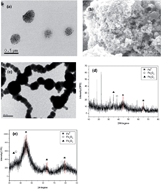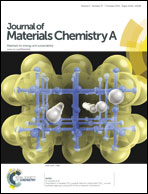Synthesis of nanoscale zero-valent iron immobilized in alginate microcapsules for removal of Pb(ii) from aqueous solution†
Abstract
Alginate microcapsules immobilized nanoscale zero-valent iron (M-NZVI), with diameters from several hundreds nanometers to several micrometers, were synthesized using ferric and calcium ions as the cross-linking cations, and then tested for removal of Pb(II) from aqueous solution. The size of NZVI particles was only a few nanometers according to transmission electron microscopy (TEM) observation. The synthesized alginate microcapsules were stable in air for as long as they were dried and contained 9.97% of iron by weight. When 0.5 g L−1 of M-NZVI were introduced into an aqueous solution containing 300.0 mg L−1 of Pb(II), 88% of Pb(II), 581.7 mg g−1 of Pb(II) uptake amount were removed from the system in 15 min. The kinetics of the removal reactions, including an initial adsorption phase and a subsequent reduction, is complicated. In addition, the synthesized M-NZVI showed a higher removal capability of Pb compared to NZVI and Ca-alginate particles. This newly synthesized material could be regenerated and reused at least 4 times when the initial concentrations of Pb(II) were ≤200.0 mg L−1. The higher reaction rates and greater removal capacity suggest that M-NZVI may be a potential material for in situ remediation of metal contaminated water and sediments.


 Please wait while we load your content...
Please wait while we load your content...